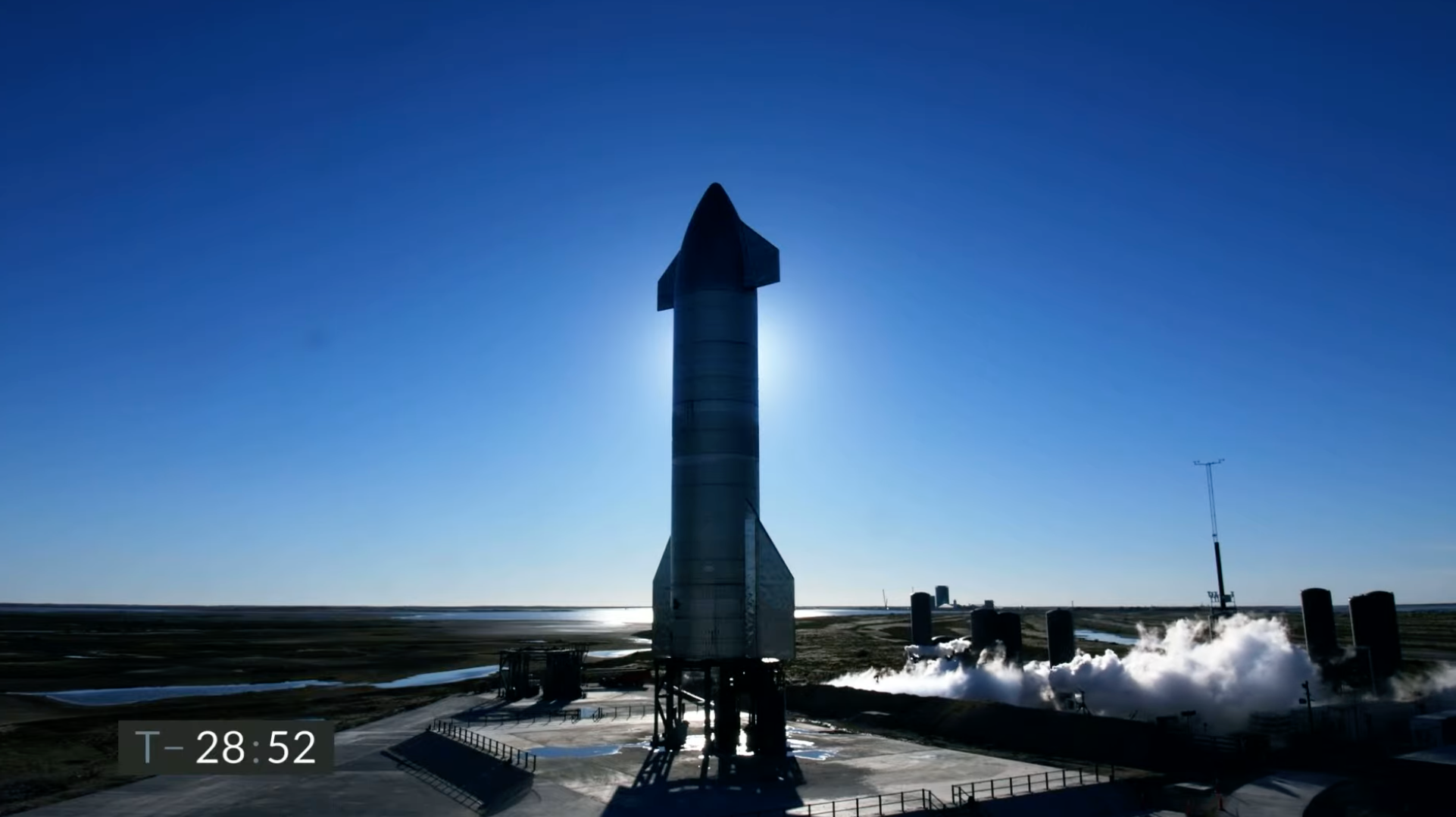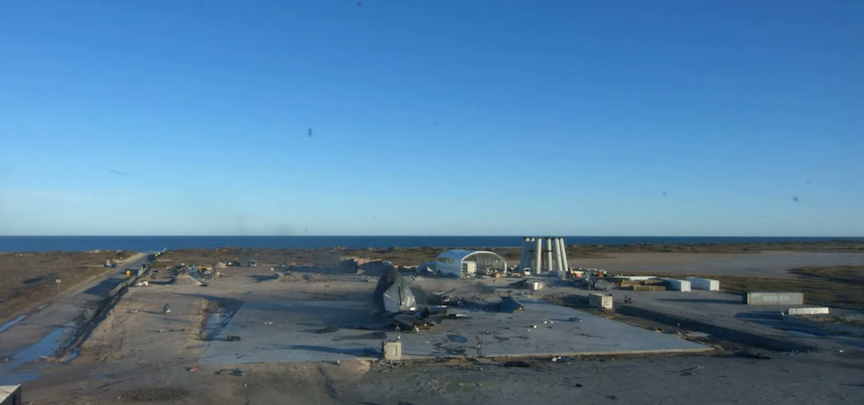Starship | SN8 | High-Altitude Flight Test
-
SpaceX to do high altitude (12.5 km) test launch of Starship SN8 today.
Currently working on "additional test prep."
Link to video"Today’s window for the test opened at 7:00 a.m. CST and goes through 5:00 p.m. CST, and we also have opportunities available on Wednesday and Thursday.
This suborbital flight is designed to test a number of objectives, from how the vehicle’s three Raptor engines perform, and the overall aerodynamic entry capabilities of the vehicle, including its body flaps, to how the vehicle manages propellant transition. SN8 will also attempt to perform a landing flip maneuver, which would be a first for a vehicle of this size.
With a test such as this, success is not measured by completion of specific objectives but rather how much we can learn as a whole, which will inform and improve the probability of success in the future as SpaceX rapidly advances development of Starship.
This will be a live feed of the flight test and will start a few minutes prior to liftoff. Stay tuned to our social media channels for updates as we move toward our first high altitude flight test of Starship!"
-
Trying for a launch in about 5 minutes - 4:30 CST.
Link to video -
"Due to a Raptor engine auto-abort at T-1 second, the SpaceX team is standing down from Tuesday's attempt of a high-altitude suborbital flight test of Starship serial number 8 (SN8) from our site in Cameron County, Texas. We have additional test opportunities available on Wednesday, December 9 and Thursday, December 10. The schedule is dynamic and likely to change, as is the case with all development testing. Stay tuned for more information on the next target test date and time."
-
Gonna try again in about 45 minutes:
Link to video -
It almost looked like the rocket didn't have enough thrust to allow a soft touch-down. Perhaps the descent was too quick.
But, on the positive side, they were able to rotate the craft, and get it aligned with the landing location.
As you said, "Next time!"
-
-
Elon: "Fuel header tank pressure was low during landing burn, causing touchdown velocity to be high & RUD, but we got all the data we needed! Congrats SpaceX team hell yeah!!"
@George-K said in Starship | SN8 | High-Altitude Flight Test:
Elon: "Fuel header tank pressure was low during landing burn, causing touchdown velocity to be high & RUD, but we got all the data we needed! Congrats SpaceX team hell yeah!!"
Yeah, I've had a few of those kind of successes. I just didn't share any of them with a worldwide audience.



 !
!